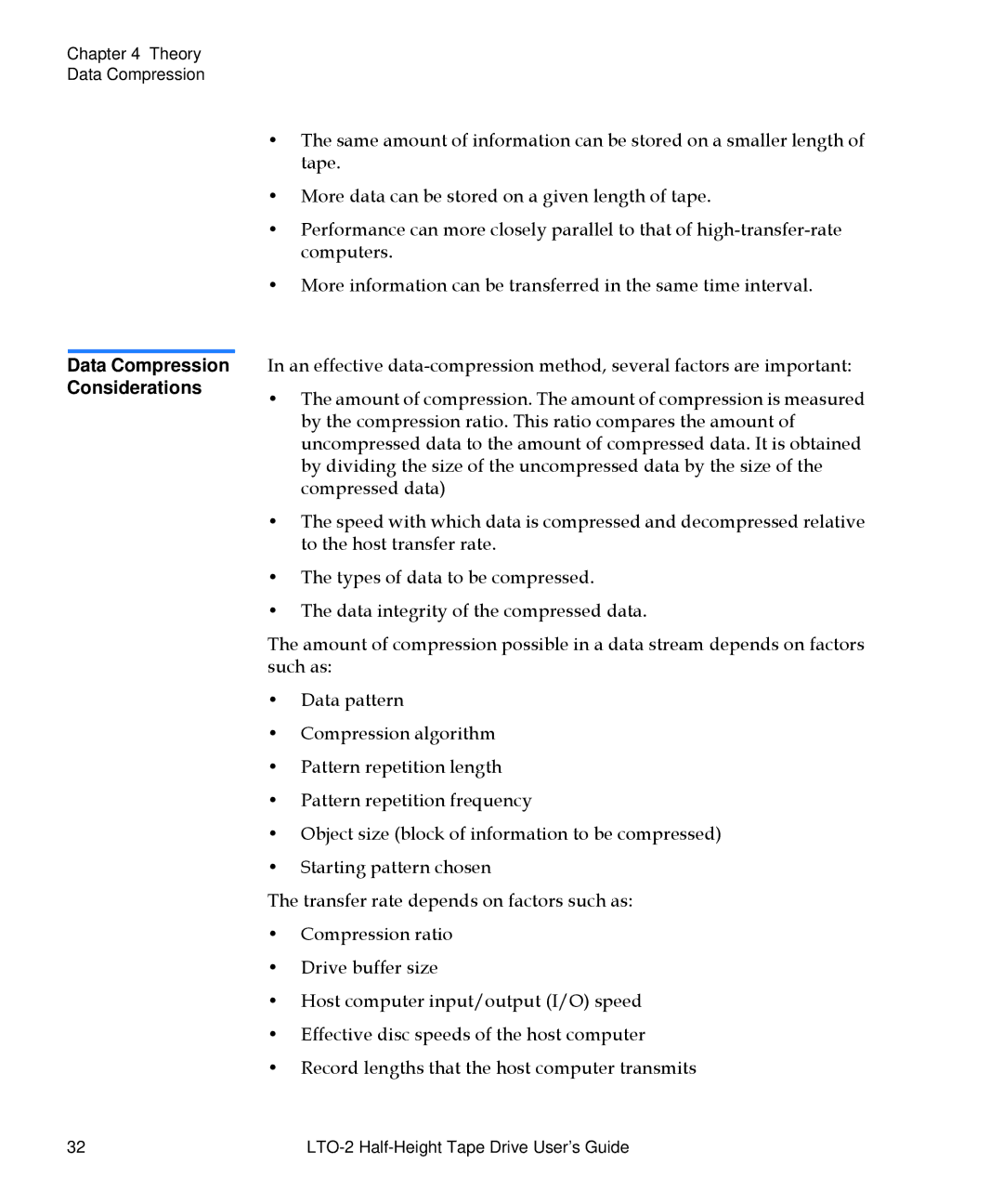Chapter 4 Theory Data Compression
Data Compression Considerations
•The same amount of information can be stored on a smaller length of tape.
•More data can be stored on a given length of tape.
•Performance can more closely parallel to that of
•More information can be transferred in the same time interval.
In an effective
•The amount of compression. The amount of compression is measured by the compression ratio. This ratio compares the amount of uncompressed data to the amount of compressed data. It is obtained by dividing the size of the uncompressed data by the size of the compressed data)
•The speed with which data is compressed and decompressed relative to the host transfer rate.
•The types of data to be compressed.
•The data integrity of the compressed data.
The amount of compression possible in a data stream depends on factors such as:
•Data pattern
•Compression algorithm
•Pattern repetition length
•Pattern repetition frequency
•Object size (block of information to be compressed)
•Starting pattern chosen
The transfer rate depends on factors such as:
•Compression ratio
•Drive buffer size
•Host computer input/output (I/O) speed
•Effective disc speeds of the host computer
•Record lengths that the host computer transmits
32 |
|
